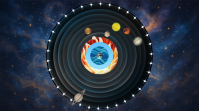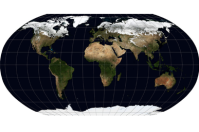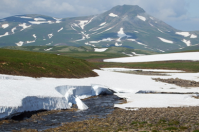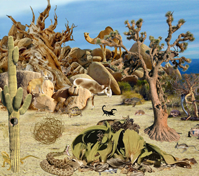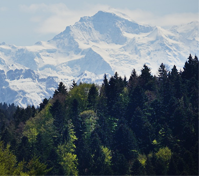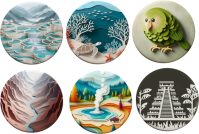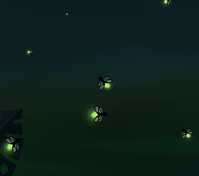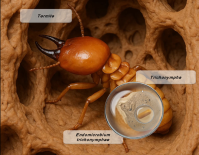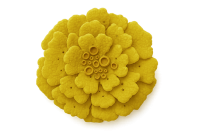7th grade
Earth & Cosmology
Activities:
Activities:
- Studying the history of people's perceptions of the world
- Determining what a planet must be like for life to arise, and how suitable Earth is for life
- Guessing places on Earth from photographs taken from Space
- Making a clay model of the Earth
- Answers to tricky questions about the Earth
Activities:
- Explore animal ranges and understand what “range” means in ecology
- Learn why accurate flat maps of the Earth are impossible and study different map projections
- Assemble a world map puzzle by dragging continents and large islands into place
- Locate famous world landmarks on an interactive map
- Identify biomes from photographs by matching descriptions to their natural environments
Activities:
- Identify tundra animals, including those well-camouflaged in their environment
- Sort animals by habitat: tundra-only, polar desert-only, or both
- Complete a survival quest: decide what to do after a plane crash in the tundra, including what to take and how to find food and start a fire
- Solve intriguing riddles about tundra phenomena—like giant “black holes,” fossilized Metasequoia trees, cold-blooded springtails, mysterious stone spheres, and glacier mice
Desert Ecosystem and Survival Quest
Activities:
- Learn about the defining features of deserts and their biodiversity
- Distinguish between animals from deserts, steppes, and savannas
- Navigate a mini survival quest: how to prepare for a desert journey, respond to a sandstorm, and locate water
- Tackle creative challenges such as growing melons in arid soil or spotting scientific inaccuracies in an image
Activities:
- Identify traits of synanthropic animals through an interactive selection task
- Use real field guides to classify plants from a vacant lot (requires prep)
- Answer higher-order questions on urban adaptation and survival strategies
- Tackle a real-world mini project: how to deal with Pharaoh ants at home
Activities:
- Identify mountain biomes from photographs
- Match animals to their correct altitudinal zones
- Arrange animals according to mountain elevation levels
- Recognize famous mountains and place them at their proper heights
- Locate well-known mountain peaks on a world map with country flags as visual aids
Activities:
- Step into a post-nature future and role-play as memory keepers of Earth's ecosystems
- Match historic photographs with national park descriptions and locations
- Explore conservation efforts in places like Yellowstone, the Galápagos, and the Serengeti
- Reflect on ethical behavior in nature reserves
- Confront a visual before/after comparison of human impact on the natural world
How to Survive on a Deserted Island
Activities:
- Prioritize actions for survival in a deserted island scenario
- Plan and start a fire
- Find and procure safe water
- Build a shelter to protect themselves
- Locate and gather food
- Maintain a positive mindset under stress
- Create and send signals to rescuers
Activities:
- Evaluate the cleanliness of a meadow using bioindicators
- Detect signs of an approaching storm during a summer swim
- Choose the best spot for planting peonies in a country garden
- Investigate why algae bloomed in a pond
- Predict tomorrow’s weather using non-living indicators
- Observe fireflies as indicators of ecosystem health
- Use living organisms to forecast the weather
- Find a copper deposit by identifying special wildflowers
- Identify signs of natural disasters based on animal behavior
- Understand why animals are often better than humans at sensing environmental change
Activities:
- Explore illustrated case studies by clicking on interactive buttons, each opening a page with visuals and clear explanations.
- Answer short questions: How is the symbiont transmitted? Is the relationship obligate or facultative? Does it represent mutualism, commensalism, or parasitism?
- Earn points for correct answers (+1) and lose points for mistakes (–1). Progress is always visible on the screen.
- Analyze benefits for each partner and drag the correct options into a large digital chart. Options can be flipped through with black arrows.
- Reflect on a thought-provoking question: Are mitochondria and chloroplasts still symbionts, or should they be considered true organelles?
Activities:
- Compare lichens with milk fungus and kombucha to discover what they all have in common.
- Explain why these organisms are called composite and how cooperation creates something new.
- Explore the internal structure of a lichen and describe the roles of the fungal and algal partners.
- Analyze their relationship as both cooperative and competitive — a complex form of symbiosis.
- Investigate how lichens reproduce and recognize soredia under magnification or visual clues.
- Identify 11 lichen species using interactive morphological keys.
